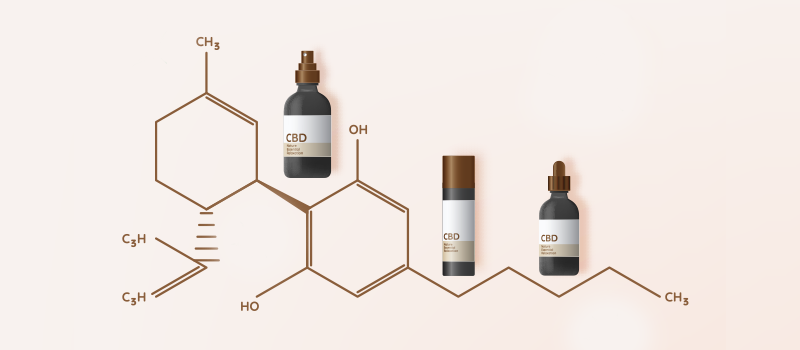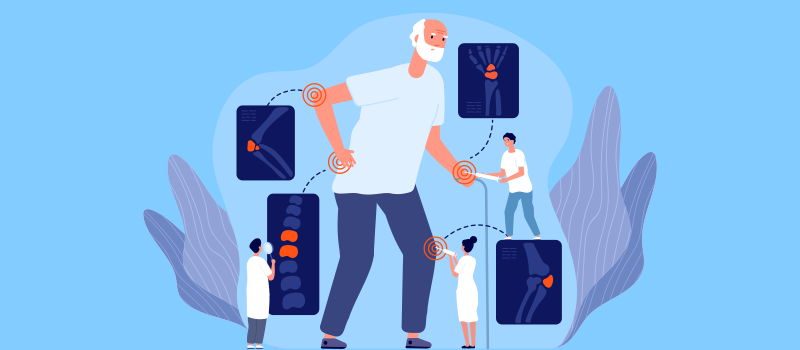What’s the Buzz
The Bee Healthy Blog
What Does a Physical Therapist Do?

Physical therapists (PT) are an integral part of comprehensive treatment plans for patients with musculoskeletal disorders. They can recommend the best physical therapy for patients who suffer from disorders linked to wrong posture or those recovering after trauma, accidents, and limited movement as a result of any acute or chronic condition.
Continue reading to learn more about what physical therapists do and the treatment options they provide.
Who is a Physical Therapist?
A physical therapist is a licensed and trained medical professional having a physical therapy degree and experience in diagnosing physical abnormalities, maintaining physical function, restoring physical function, and promoting physical function and activities.
Patients seeking hands-on care from a physical therapist have experienced reduced mobility, restricted movement, and discomfort from certain acute or chronic health conditions. These might include recoveries from sports injuries, surgeries, accidents, and birth defects.
What is Physical Therapy?
Physical therapy aims to ease acute and chronic pain, help a person move, function, and live a restored life by focusing on a particular area of treatment.
A physical therapist may provide treatment in hospitals, private practices, nursing homes, fitness centers, and rehabilitation facilities. Each area of practice has specialized equipment that physical therapists can use to exercise treatment modalities for the patient.
What are the benefits of physical therapy?
Customized treatments
Physical therapists tailor treatment to suit the specific goals of patients experiencing pain or restricted movement. A physical therapist can recommend hands-on techniques and exercises to strengthen groups of muscles and ligaments based on the type of injury or illness.
Improve sports performance
Sports physical therapists have skills to help athletes maximize their performance by using muscles in new ways and strengthening specific parts of the body.
Faster recovery from injuries and illnesses
Physical therapists work with patients recovering from injuries or chronic conditions. They demonstrate passive and active exercises and other physical therapies to help improve their movements and manage pain and support recovery.
Other benefits
Depending on the specific injury or the reason for treatment, physical therapy might offer several other beneficial effects, such as:
- Pain relief with reduced dependence on opioids
- Improved movement and mobility
- Avoiding surgery
- Recovery from injury or trauma
- Fall prevention
- Recovery from paralysis or stroke
- Improved balance and flexibility
- Management of age-related medical problems
- Enhanced sports performance
What are the educational qualifications of physical therapists?
According to the APTA (American Physical Therapy Association), the educational requirements for becoming a PT in the US include:
- Passing a state licensure exam.
- Earning a physical therapy DPT degree (Doctor of Physical Therapy) through a physical therapist education program accredited by the Commission on Accreditation in Physical Therapy Education.
The program takes about 3 to 4 years and sometimes requires the students to have a bachelor’s degree for acceptance. A national physical therapy examination is also needed in some cases to become board certified.
Physical Therapist Licensure and Certification Process
Certification is not required for obtaining Physical Therapist Licensure. However, having a certification might give physical therapists more opportunities. The certification of the Physical Therapy Board requires students to undergo training for the Doctor of Physical Therapy, an internship in a physical therapy clinic, and a certificate examination in order to become board certified.
What are the types of physical therapies?
Physical exercise
Patients receiving treatment and care from physical therapists are taught contraction and relaxation techniques aimed at increasing their ease of movement. The purpose of this training is to help the patient return to the pre-injury level of motion and movement.
Hot and cold therapies
Physical therapy programs may include hot and cold therapies to regulate blood flow in the affected body parts and promote healing. Cryogenics, infrared heat, and diathermy are usually included in physical therapy to treat joint complaints.
Class IV laser therapy
Physical therapists choose class IV laser therapy, which uses light of specific wavelengths to stimulate the natural healing ability of your body.
Laser therapy catalyzes the body’s healing mechanisms by increasing blood circulation. It can also reduce inflammation and encourage the healing of cells in the muscles, tendons, ligaments, and joints.
Ultrasound
Physical therapy can include ultrasound to address concerns related to deep inflammation. This therapy involves the exposure of the tissues to sound waves to induce vibrations. These intense vibrations help by creating an increased flow of blood, oxygen, and nutrients essential for healing damaged tissue.
What to expect during a physical therapy session
Physical therapy sessions typically have 4 components:
- Examination
- Assessment and supervision
- Diagnosis
- Implementation of a treatment plan
During each session, your physical therapists diagnose and assess your progress and assign you warm-up exercises before beginning your actual program of rehabilitation or corrective exercises.
What happens during physical therapy assessment?
During the assessment, your physical therapist will assess your body functions in terms of the following components:
- Muscle strength
- Posture
- Mobility
- Range of motion
- Flexibility
- Balance
- Muscle function
- Coordination
- Skin integrity
Your initial ability and subsequent progress will determine the future course for managing your health conditions.
What do physical therapists help with?
The treatment by physical therapists varies depending on the specific area of damage and the diagnosis. They can treat patients with a number of conditions that cause difficulty walking, maintaining balance, or performing activities, including daily tasks or playing sports.
What is the scope of practice of physical therapist assistants?
Licensed physical therapists and physical therapy assistants are trained to manage patients of all ages, including children and adults.
The typical tasks include:
- Provide supplementary treatment for a variety of acute and chronic medical conditions, depending on their specialty.
- Improve prognosis of cardiovascular and pulmonary conditions, such as cystic fibrosis, chronic obstructive pulmonary disease, and post-myocardial infarction cardiac failure.
- Reduce restriction of movements related to musculoskeletal dysfunction, such as back pain, temporomandibular joint disorders, or rotator cuff tears.
- Accelerate recovery from neurological conditions, such as cerebrovascular stroke, Parkinson’s disease, spinal cord trauma, multiple sclerosis, vestibular dysfunction, or traumatic brain events.
- Restore function and improve the quality of life of children with cerebral palsy or muscular dystrophy through electrical stimulation and massage.
- Reduce downtime following sports-related injuries, such as tennis elbow, muscle or ligament tear, and concussion.
- Manage pelvic floor dysfunction, including urinary incontinence, in men and women.
It is important to note that although physical therapists do not usually treat medical conditions other than primary musculoskeletal conditions, they are an integral part of a multidisciplinary healthcare team of professionals who work to optimize recovery and train patients on how to improve their movement patterns.
Physical Therapist: Frequently Asked Questions
How does a physical therapy program help with falls?
A physical therapist with advanced training can help prevent the risk of falls in vulnerable patients such as those who have suffered a stroke or Parkinson’s disease. The treatment plan focuses on identifying and eliminating the possible factors that could lead to a fall.
Where do physical therapists work?
Licensed physical therapists work in different settings, such as hospitals, home health agencies, community health centers, rehabilitation centers, sports centers, and outpatient practices.
Is a physical therapist a medical doctor?
Despite being medically educated, physical therapists are not doctors (M.Ds) or osteopaths (Os). They do not treat medical problems, prescribe medicine, or make surgical decisions.
Typically, a patient is referred to a physical therapist by a medical doctor to help improve movement and reduce pain.
What are 3 things physical therapists do?
- A physical therapist helps patients move better through short-term or long-term exercise and rehabilitation programs based on expected outcomes.
- Physical therapists with additional training use techniques such as hand-held therapy for strengthening and stretching and electro-mechanical therapy with ultrasound.
- Physical therapy practice focus includes supporting the recovery of patients who suffered back injury, neck injury, fracture, or spinal injury.
References:












SOCIAL